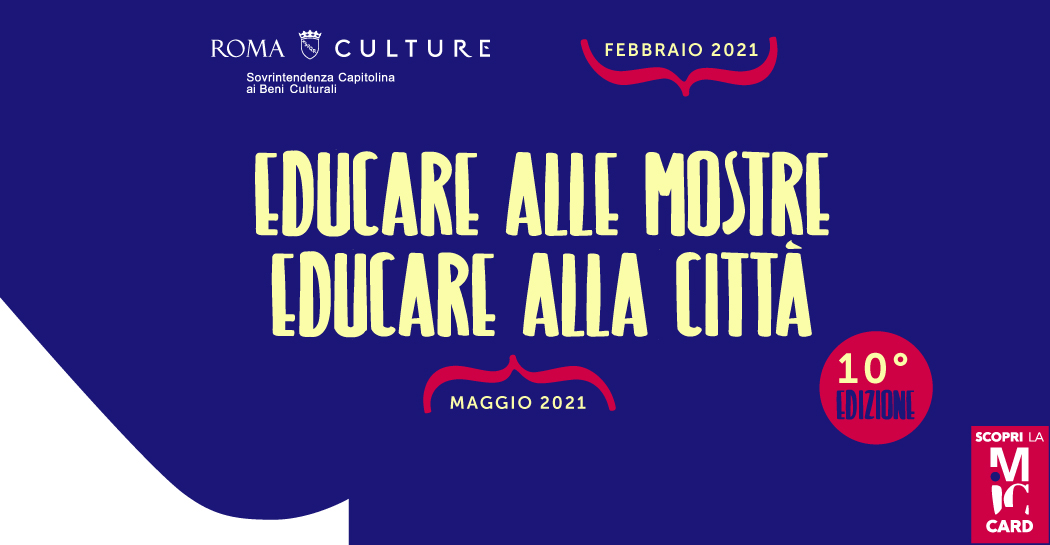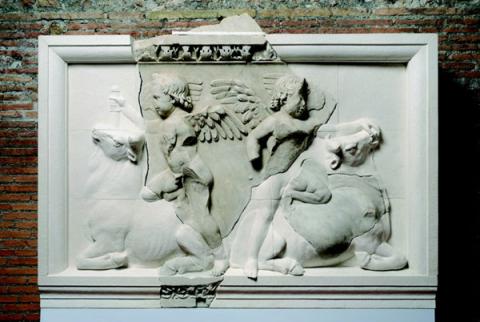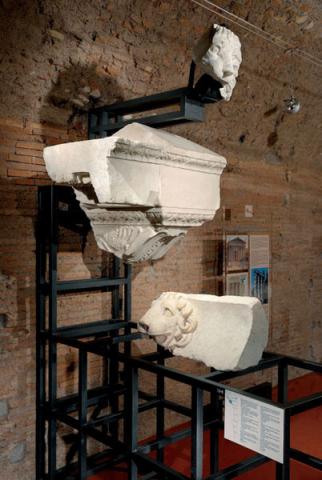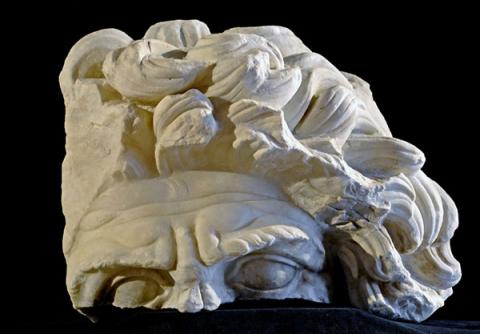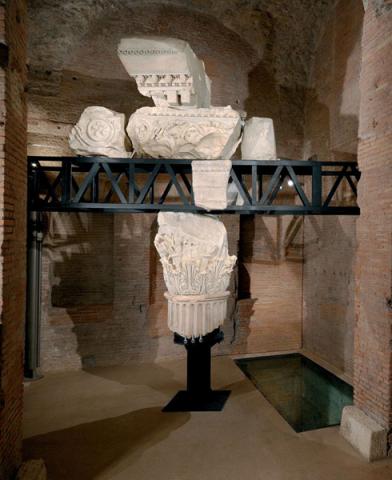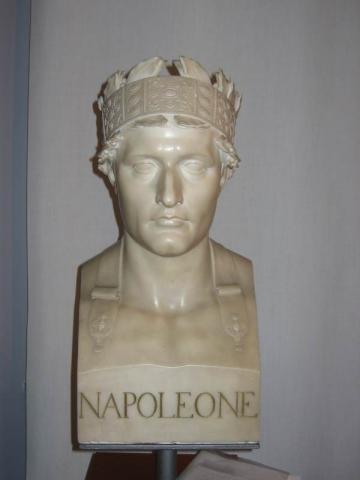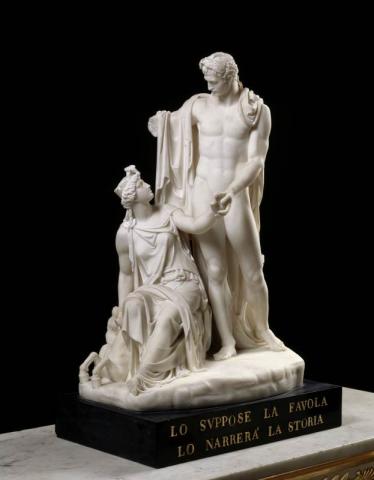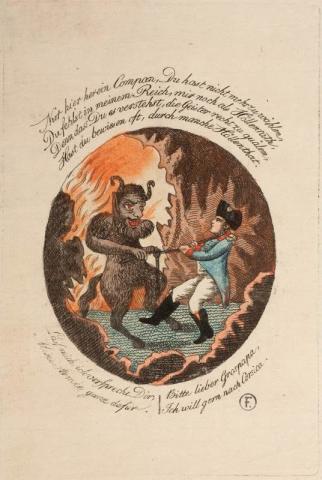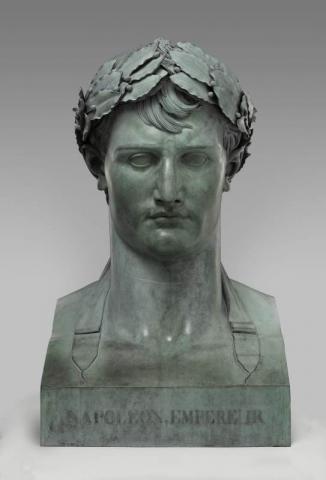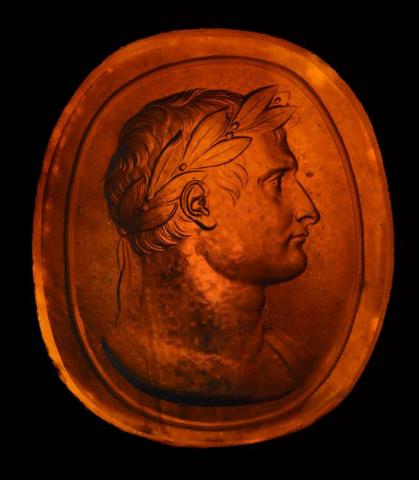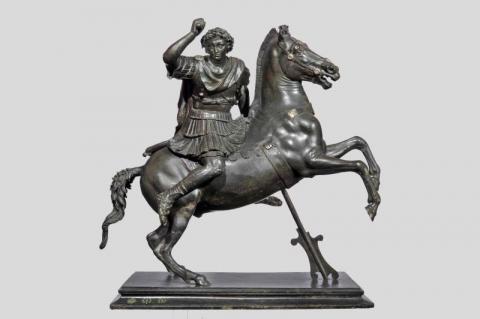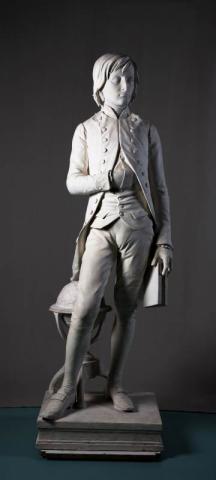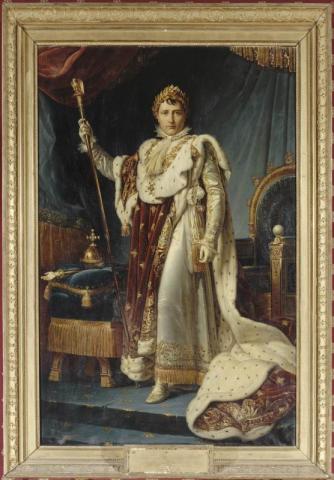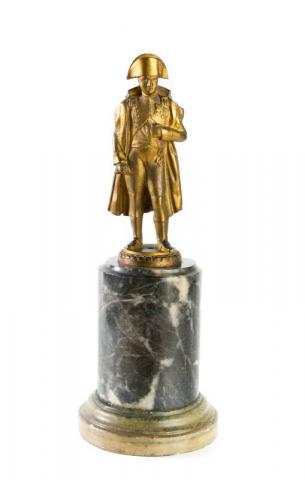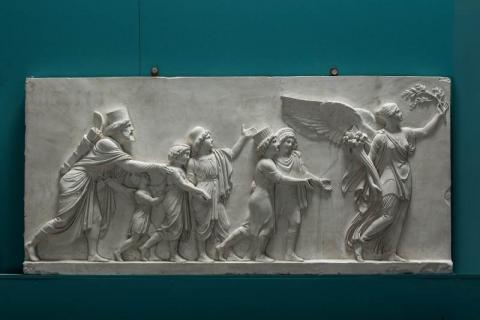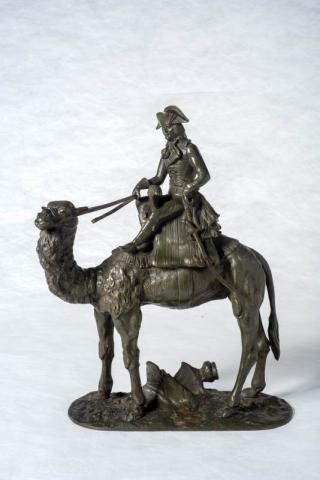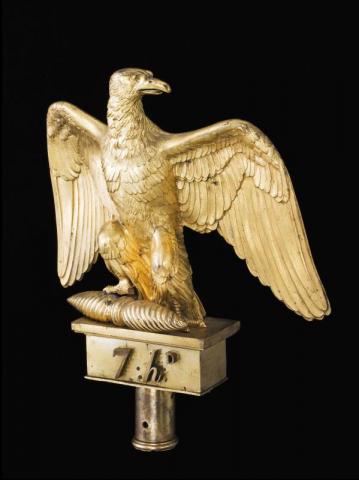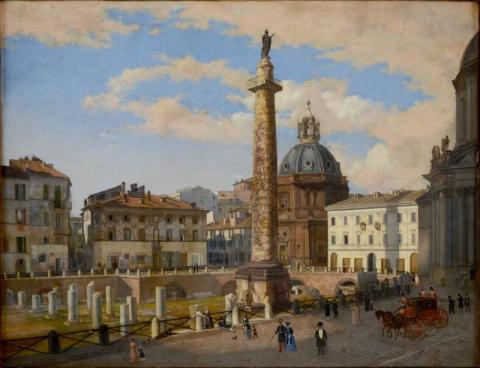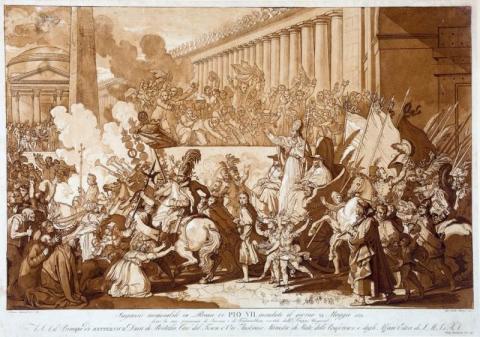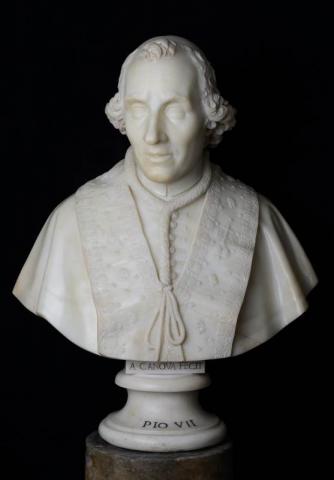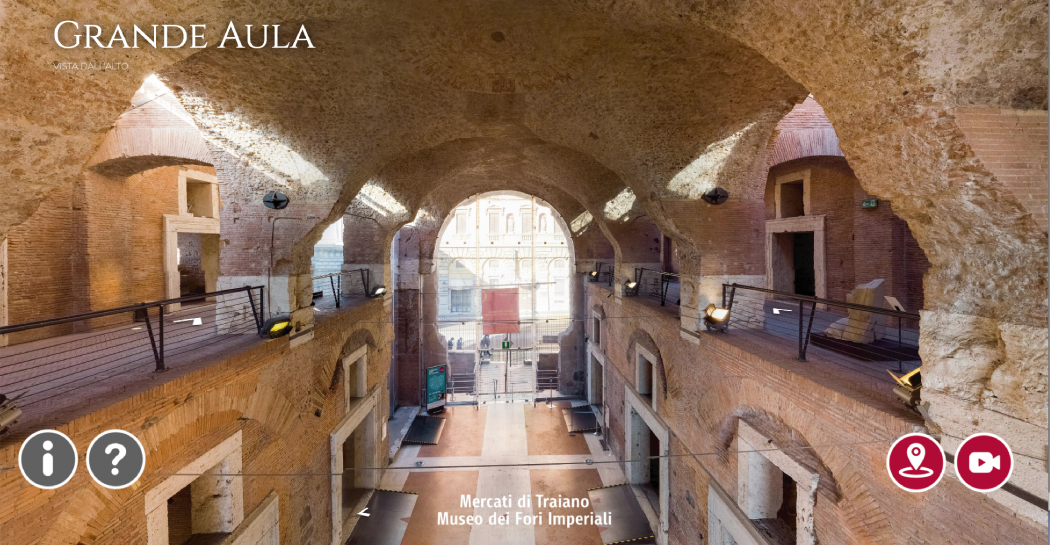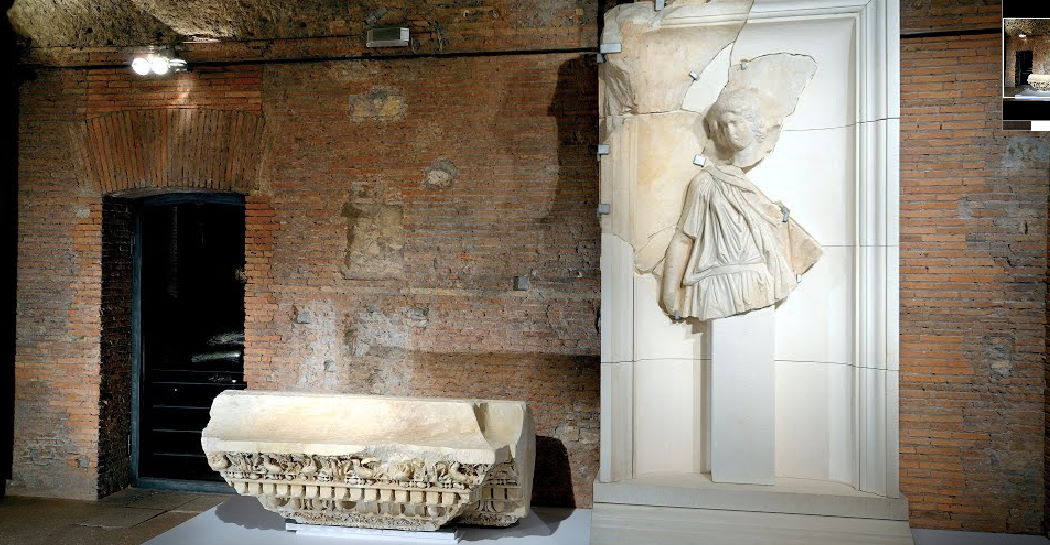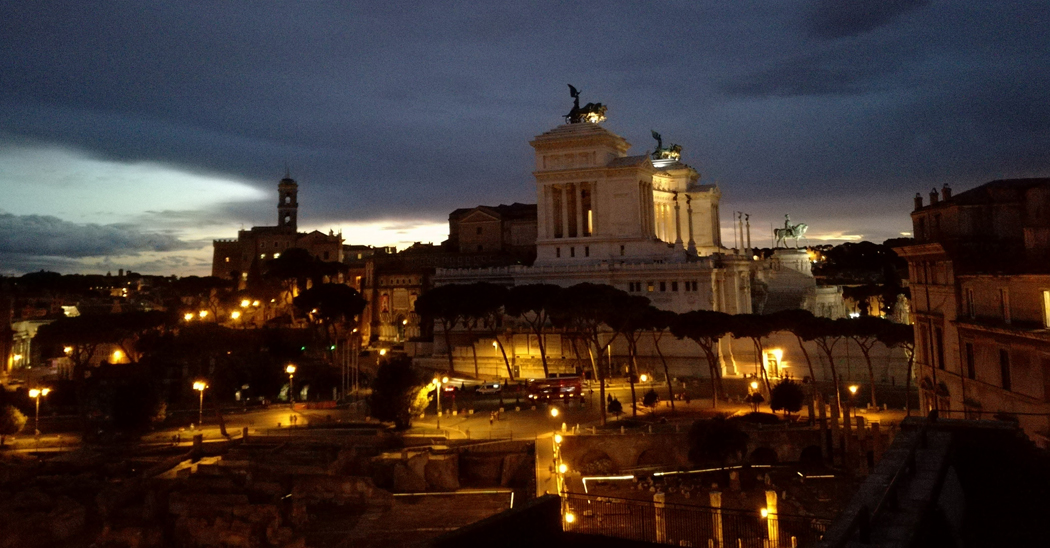Napoleon and the myth of Rome
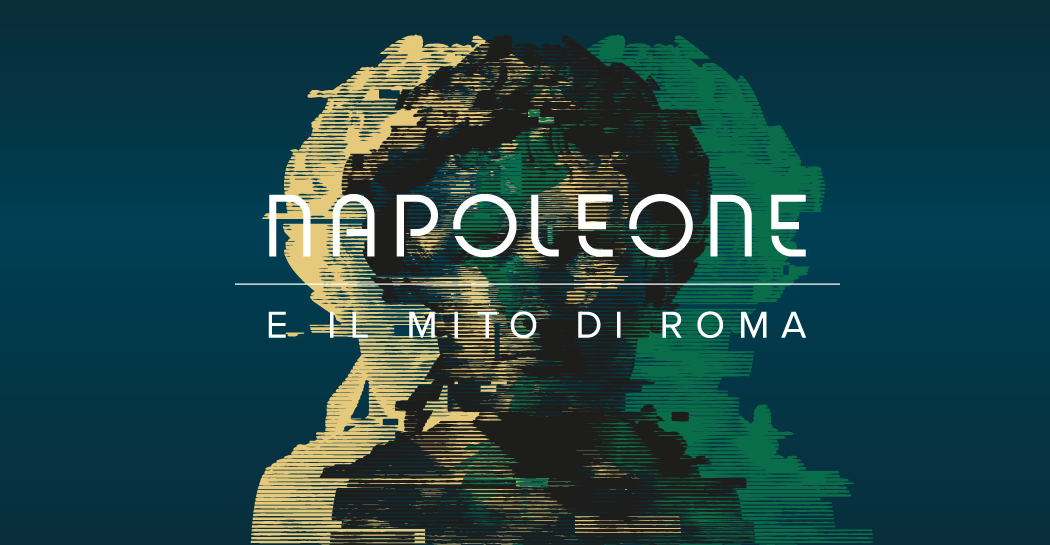
Created for the 200th year of Napoleon Bonaparte's death, the exhibition is a celebration of his relationship with the ancient world and Rome. Extended until November 7, 2021
The exhibition, organised by Claudio Parisi Presicce, Massimiliano Munzi, Nicoletta Bernacchio and Simone Pastor, covers the relationship between Napoleon and the models and the classical world from the time when he was young, until the use of imperial art in political promotion, with details concerning the relationship with the Vatican, the archaeological excavations in the Forum of Trajan organised by the Napoleonic Administration in Rome and Egyptomania.
Rome was incorporated into the French Empire from 1809 to 1814, and it was the second imperial city second only over Paris by order from Napoleon. The archaeological area around the Imperial Forums was the object of excavations promoted by the Napoleonic administration in Rome between 1811 and 1814 in order to open the area to the south of Trajan's Column, that Napoleon used as model for the Vendôme Column in Paris between 1806 and 1810. Here, the French wanted to apply in Rome the urban planning standards that, in their intentions, would really transform the city into a second Paris. Inspired by Imperial Rome in all its aspects in order to celebrate the glory of Napoleon and his family, the use of a campaign style inspired by Ancient Rome, representing the Emperor as a descendant of the great commanders of the past, of the Roman Emperors, or even as a hero and divinity of ancient Greece, in a continuous reminder of Imperial Rome, its art and its culture, became a common practice.
The exhibition is divided into three macro-sections and includes more than 100 works - including sculptures, paintings, prints, medals, gems and objects of so-called minor art - from the Capitoline Collections as well as from important Italian and foreign museums.
The first macro-section highlights the relationship between Napoleon and the classical world, following the formation of the young Bonaparte, including the adoption of several models from Antiquity, which were used from different times to send messages concerning his power, his good governance and his military conquests, up to the devotion of his figure. This section includes ancient and modern masterpieces of extraordinary historical importance, showing Napoleon's biography and, at the same time, his models and cultural influences. The works exhibited include, for exemple, the plaster statue of Napoleon Cadet at Brienne by Louis Rochet ( originally displayed in a photographic reproduction) from the Yverdon et Région (Yverdon-les-Bains), the bronze representing Alexander the Great on his horse from the National Archaeological Museum of Naples and Lorenzo Bartolini's large bronze depicting Napoleon I Emperor, from the Louvre, where Bonaparte is portrayed in the ancient style, with a laurel crown and the features of a Roman emperor. Military greatness and a vision of a conquering empire connect Alexander the Great to Napoleon himself, who adopted the Alexander style, like many other Roman commanders before him, including Julius Caesar. Napoleon compared himself to other emperors like Augustus, whose marble portrait is in the Capitoline Museums. His admiration for Hannibal was also well known, here represented by the modern copy of the famous Hannibal of the Quirinale. The macro-section closes with the death and glorification of Napoleon, considered an ancient hero but also a saint and a thaumaturge, in continuity with the kings of the French Middle Ages, as depicted in the famous painting by A.J. Gros, General Bonaparte Visits the Plague Victims of Jaffa, present in the exhibition through the print by A.C. Masson, from the Palais Fesch-Musée des Beaux-Arts in Ajaccio.
The second macro-section is dedicated at the Napoleon's relationship with Italy and Rome. It begins with three works of particular importance showing Napoleon's status as king of Italy: the Pacetti sculpture group Napoleon inspires Italy and makes it rise to a greater destiny, from the Castle of Fontainebleau, and two portraits of Napoleon from Milan (Galleria d'Arte Moderna and Palazzo Moriggia-Museo del Risorgimento). Next, the extensive programme of the urban transformation that the Napoleonic administration decided to apply in Rome is presented in the installation in the Great Hall of an avenue of cypresses, one of the main points of the exhibition. The exhibition includes a portrait of Antonio Canova from the Capitoline Museums, a leading figure on the Roman (and other) art scene at the time and author of the Bust of Pius VII, also from the Capitoline Museums, displayed in the room dedicated to Napoleon's complex relationship with the Holy See and with religion. The macro-section is completed by a detailed study of the excavation of the Basilica Ulpia: The macro-section is completed by a detailed study of the excavation of the Basilica Ulpia: recordings by Giuseppe Vasi, Angelo Uggeri, Giovan Battista Cipriani and drawings and paintings from the Museum of Rome, as well as - exceptionally exhibited for the first time - the three projects drawn up in 1812 by Giuseppe Valadier and Giuseppe Camporese and conserved at the Accademia di San Luca, will explain the different moments that led up to the discovery of the structures of the Basilica Ulpia and the important sculptural works, like the statues of the Dacians, exhibited in the permanent collection in the Museum, joined for the first time with sculptures from the area and now conserved in the Vatican Museums.
The third macro-section analyses certain aspects concerning the use of ancient models in Napoleon's art and epic, such as the Roman eagle, represented in the exhibition, including the flag of the 7th Hussar Regiment from the Musée de l'Armée in Paris. Napoleon's approach to ancient times was influenced by the Egyptian Campaign, a military and cultural campaign at the same time, illustrated by a number of works, including the print by Girardet from the Napoleonic Museum in Rome, showing General Napoleon Bonaparte at the Pyramids, and the bronze statuette by C.J. Meurant from the Palais Fesch-Musée des Beaux-Arts in Ajaccio: Bonaparte on a Dromedary. From Egypt to Babilionia, following the Alexander the Great's footsteps: this itinerary is celebrated in the exhibition with five panels showing The Triumph of Alexander the Great in Babylon by Bertel Thorvaldsen, in its version conserved in the Civic Museums of Pavia and based on a decoration by the famous sculptor for Palazzo del Quirinale in 1812, as part of the decoration of the imperial flats intended for Napoleon and his family but never lived there because Napoleon never came to Rome.
The view of Rome brings back the model for excellence: Trajan's Column. After the creation of the models commissioned by Louis XIV and arrived in Paris in 1671, this magnificent work of art was a source for inspiration and imitation for many French artists. But it was under Napoleon that the Column had its most famous and original imitation: the Vendôme Column in Paris, a celebration of an empire and an emperor and his military enterprises.
The exhibition ended with the famous painting Napoleon in his coronation dress, painted by François Gérard in 1805 and conserved in Ajaccio, in the Palais Fesch-Musée des Beaux-Arts: the painting shows Napoleon at his most glorious moment and represents the most evident example of his use of symbols.
Napoleon's individual tastes were those of his own generation, but he knew that the ancient world represented a cultural category as vast as it was varied and could somehow be adapted to all uses. Napoleon put into practice a kind of archaeology of images of power through the meticulous and unscrupulous recovery of symbols, figures and concepts from the past, to be used to create an impressive collection of portraits and ornaments, allusions, references and borrowings that would serve to legitimise a regime whose existence rested essentially on military force.
The images of Napoleon's anti-comania (heroic nudity, the insignia of power, the laurel, the eagle...) refunctionalized in the present are at the same time turned towards the future: they are addressed to posterity and participate in the construction of the Emperor's legend.
Gangemi Editore (in via di pubblicazione)
Information
Reopening from April 26, 2021
to May 30th 2021, extended until November 7, 2021
Every day 9.30-19.30
Last admission one hour before closing
Closed:
1 May
Before planning the visit, CONSULT THE NOTICES
Free access to the Museum with MIC card
Call center +39 060608 (daily from 9.00 to 19.00)
Promoted by
Roma Culture, Sovrintendenza Capitolina ai Beni Culturali
Curated by
Claudio Parisi Presicce, Massimiliano Munzi, Simone Pastor, Nicoletta Bernacchio
Exhibition design
Stefano Balzanetti, Simone Bove, Alessandro Di Mario, Eleonora Giuliani e Mario Maiorani per –wise design
Organisation
Zètema Progetto Cultura
With the collaboration of
Iowa State University, College of Design per il concept grafico
Technological support
Cultune owned by Softlab Group
Catalogo
Press Room
Gallery
Eventi correlati
1008757
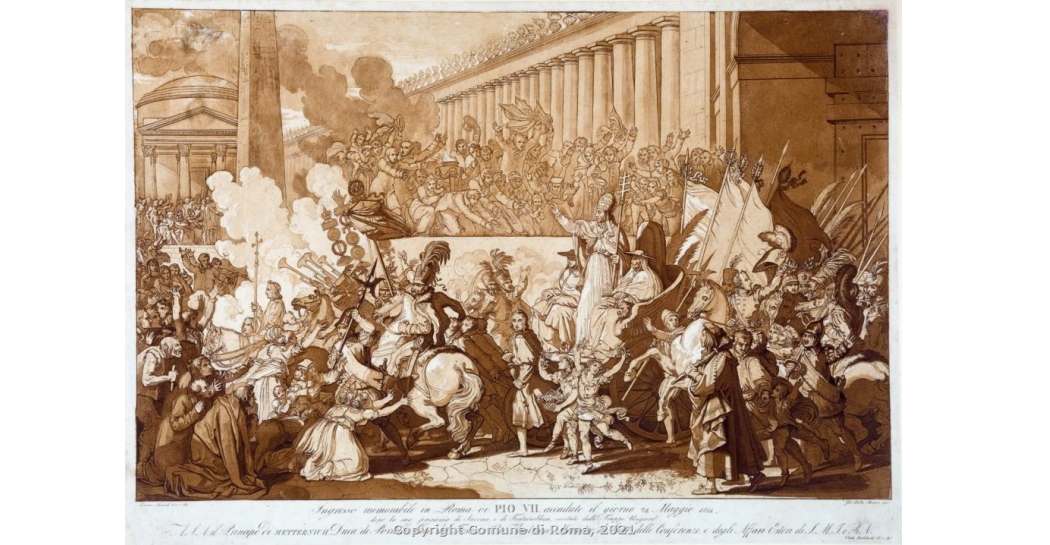
1008346
